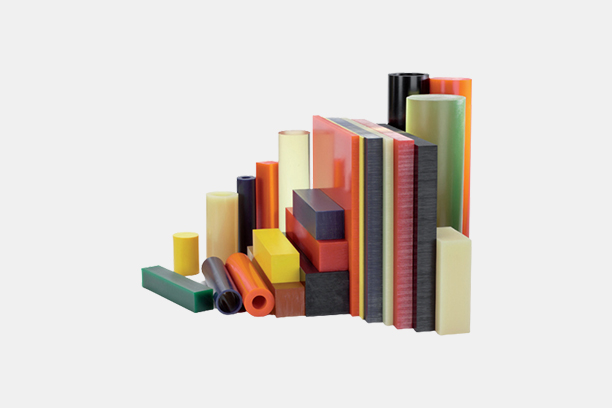Here are just a few examples of many end uses where serilor® has been successful:
- serilor® squeegees resist aggressive solvents used in the screen printing industry
- Wheel chocks for railway and metal forming pads for aerospace are just two examples of serilor® working in high load bearing applications.
- Polyurethane springs provide excellent flex fatigue performance for industries where corrosion, vibration, and magnetism preclude metal springs.
- serilor® used in die cutting pads and steel rule dies give extended life resulting from outstanding cut and tear resistance.
- Shock absorbers and dampening pads for ship building utilize urethane’s wide range of resilience.
Chute linings for abrasive media in mining, or grain handling in agriculture benefit greatly from the polyurethane’s resistance to abrasion.
The characteristics of serilor® polyurethane
The first studies and experiments on the compounds forming the polyurethane were carried out in 1849 by Charles Wurtz, then by Otto Bayer in 1937. A polyurethane is an organic compound produced by the reaction of an isocyanate and an alcohol.
The formulas used by FIMOR POLYURETHANE are thermosetting mixtures. The result is a polymer that can be used only once, which is why it has exceptional chemical and mechanical resistance properties, and in particular a creep strength, which on the other hand limits the use of thermoplastics.
FIMOR POLYURETHANE offers customized formulations with the required properties, especially polyesters for mechanical parts, and polyethers for environmental durability.
There is not an industry in which serilor® polyurethane does not find an occasional or even essential use: SEMI-FINISHED PRODUCTS, SERIGRAPHY SQUEEGEES AND SQUEEGEES FOR SCRUBBER-DRYERS, COMPONENTS FOR THE RAILWAY INDUSTRY, INDUSTRIAL PROTECTION PARTS and TECHNICAL PARTS FOR AGRICULTURE AND BREEDING, are just examples of specific developments.















